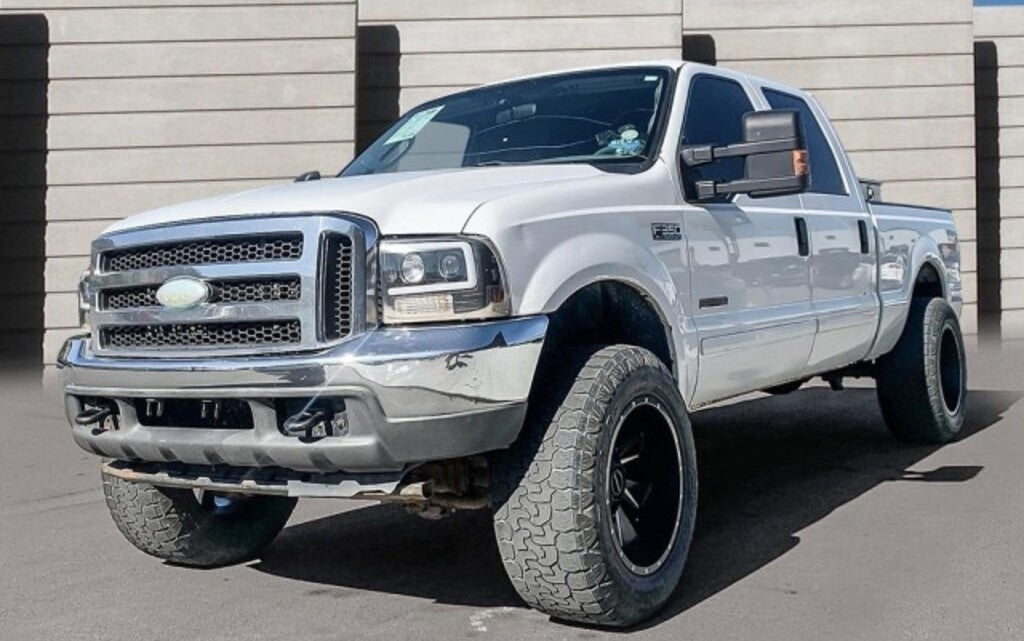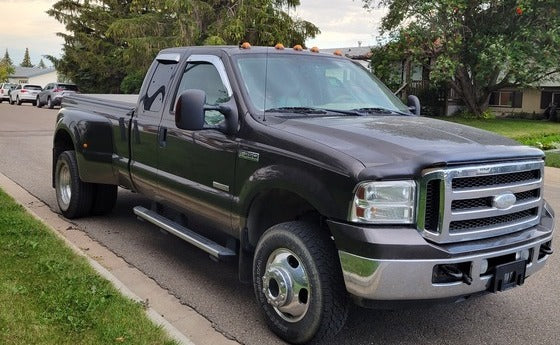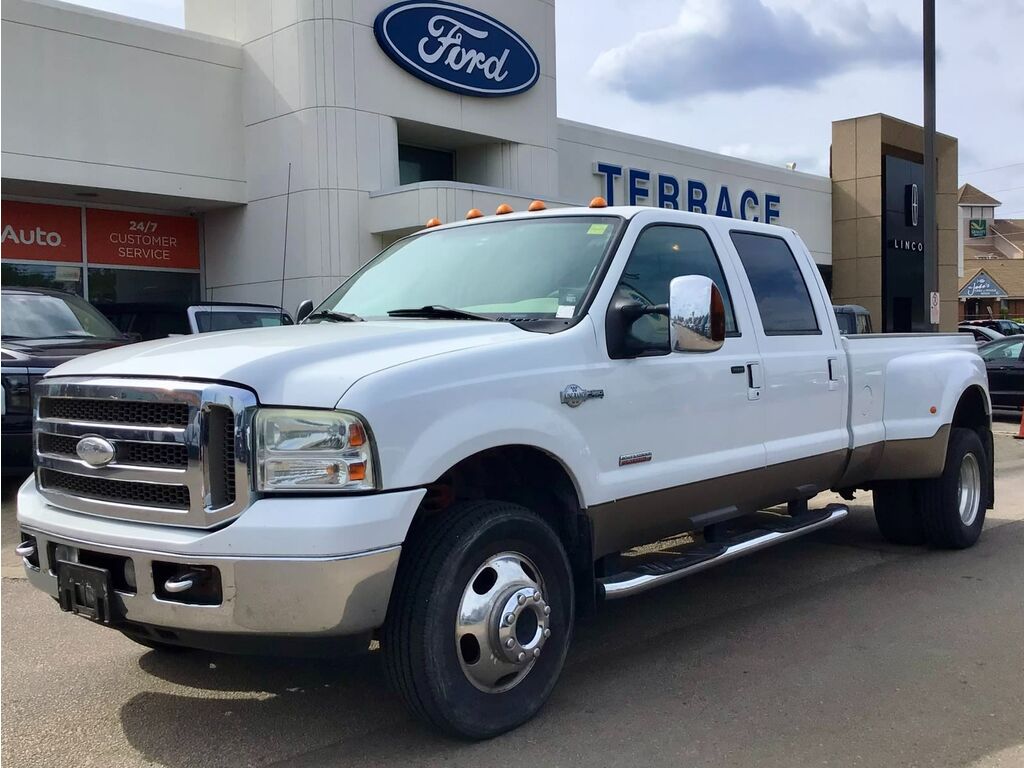START TYPING TO SEE PRODUCTS YOU ARE LOOKING FOR.
0
Your shopping cart is empty.

The 6.0L Power Stroke was developed in response to more stringent NOx emissions standards for diesel engines. The need to meet these requirements led to the creation of a new engine platform.
However, due to Ford's urgency to release the engine quickly, certain issues emerged. The initial engines faced glitches in the injection system, stemming from software problems. As a result, emergency vehicles using the 6.0L engine encountered complications, leading to lawsuits against Ford.
To enhance performance, the 6.0L Power Stroke incorporated various new emissions control equipment and a new variable geometry turbo, boosting power to 325 hp and 570 pound-feet of torque. Nonetheless, specific components, such as the oil cooler, EGR cooler, and high-pressure oil pump, were prone to failure. These reliability issues tarnished the engine's reputation. Ultimately, Ford discontinued the 6.0L Power Stroke in 2007.

The 6.0L engine differed from the 7.3L as it was more compact and incorporated the oil cooler and high-pressure oil pump within the block. Additionally, the gear train for the crankshaft, camshaft, and high-pressure oil pump was relocated to the back of the engine. Notable features included an exhaust gas recirculation (EGR) system, four-valve cylinder heads, a quick-spreading variable geometry turbocharger, and a fuel injection system with hydraulically actuated electronically controlled unit injectors (HEUI).
Despite some serious issues, towing capabilities were not among the problems. The towing capacity varied depending on factors such as model, year, cab size, and box length, ranging from a conventional 12,500 pounds to 19,200 pounds.
Despite the challenges faced by the 6.0L engine, enthusiasts managed to achieve impressive performance levels. Online guides are available detailing how to add an extra 300 hp, and there are remarkable examples like Diesel Power Challenge competitor Jesse Warren, who pushed his 6.0L to an astounding 1,758 hp and 2,532 pound-feet of torque. These achievements demonstrate that the engine is indeed a viable platform to work with.

In comparison to the well-regarded 7.3L Power Stroke, the 6.0L version is unfortunately known for a variety of issues. Here are some of the prevalent problems:
The original exhaust manifolds are known to crack and warp, which often breaks studs and causes exhaust leaks. To enhance reliability and performance, it is recommended to upgrade your exhaust manifolds and up-pipes.
The oil cooler's role is to reduce the engine oil temperature. However, this part is notorious for clogging or becoming restricted, often with little to no warning. Debris like silicone sand from the manufacturing process can lead to blockages in the coolant system. Overheated oil can also result in the failure of gaskets and O-rings. Regular checks for these problems should be incorporated into routine maintenance.
These issues are predominantly found in the 2003 model. The EGR coolers and valves, which are designed to cool exhaust gas for recirculation into the intake manifolds, are often prone to soot buildup and failure. This can lead to cracks and coolant leakage into the engine, potentially causing severe engine damage.
The 6.0L Power Stroke utilizes split shot electronic unit injectors for fuel delivery. Unfortunately, these injectors are sensitive to poor fuel and oil quality. Factors like dirty oil, low fuel pressure, electrical problems, and mechanical failures can all cause injector failure.
The FICM, responsible for precise fuel injection timing, may gradually degrade, often due to low battery voltage. This decline can go unnoticed for so long that by the time an issue is detected, it might be too late to rectify.
Given the high pressures it operates under, the fuel injection system can experience internal leaks as the O-rings wear down. When the engine heats up, this can lead to hard or non-starts, or even a loss of power.
The variable geometry turbocharger was designed to diminish turbo lag and improve throttle response. However, carbon or rust accumulation in the vanes can cause them to jam, resulting in an over-boost or no-boost situation.
There are four torque-to-yield (TTY) cylinder head bolts per cylinder, each with a specific clamping force. Unfortunately, certain situations can cause these bolts to stretch and lose their clamping ability, potentially leading to a blown head gasket."

Bulletproofing is a term coined by diehard 6.0L fans. When you bulletproof your diesel, it means that you have addressed at least four of the main problems associated with the Power Stroke. It will help to eliminate issues with these components and make your vehicle more reliable. This can be done by replacing and upgrading these parts. While this may seem to be solely about adding horsepower, it also means toughening your vehicle to survive this boost in power.
Several components on the 6.0L Power Stroke are known for their engineering shortcomings, often leading to premature failures and other problems. Fortunately, high-quality replacement parts are available that can significantly improve the engine's dependability. Components to consider upgrading include:
Several replacement options are available, such as the Screamer Performance GT37 Turbo. This drop-in turbocharger upgrade offers enhanced airflow and reduced backpressure.
See all the '03-'07 6.0L Power Stroke Turbo Chargers
Boost your engine's performance with new fuel injectors. Each injector undergoes flow testing and can deliver higher volumes of fuel to meet all your engine's fuel requirements.
See BD Diesel's '03-'07 6.0L Power Stroke Fuel Systems
The Fuel Injection Control Module (FICM) plays a crucial role in the performance of your vehicle. Waiting for it to fail before replacing it isn't a wise approach. A new FICM will offer peace of mind, improved throttle response, and a boost in horsepower. It comes pre-programmed and ready to install, saving you the worry about the existing part deteriorating. High voltage options are also available.
Using head studs allows for a more consistent and accurate torque loading. The top of the stud has finer threads, which enables more precise torque readings and increases accuracy.
Despite its flaws, you can substantially strengthen the 6.0L Power Stroke engine with the right replacement parts, extending its lifespan and improving its reliability. If you're interested in learning more about upgrading your engine or available parts, feel free to contact us today. We're here to answer all your queries.
See all the BD Diesel Ford 2003-2007 6.0L Power Stroke aftermarket and replacement products.

| Engine: | 6.0L Powerstroke |
| Engine Design: | Turbocharged V-8 Diesel |
| Years Produced | 2003 to 2007 model years for Ford Super Duty and 2003 to 2009 for select commerical vehicle platforms |
| Transmissions: | 5-Speed 5R110W Torqshift Automatic ZF6 6-Speed Manual |
| Displacement: | 6.0 Liters (365 Cubic Inches) |
| Bore: | 3.74 inches (95 mm) |
| Stroke: | 4.134 inches (105 mm) |
| Block Material: | Cast Iron Block |
| Cylinder Head Material: | Cast Iron Cylinder Heads 4 valves per cylinder head |
| Intake Manifold: | Aluminum |
| Compression Ratio: | 18.0:1 |
| Firing Order: | 1-2-7-3-4-5-6-8 |
| Turbocharger/Air: | Garrett VGT GT3782 TurboCharger |
| Fuel Injection: | HEUI, Hydraulic Actuated electronic unit injectors |
| Valvetrain: | Single Cam 32 Valve |
| Oil Capacity: | 15 Quarts with filter |
| Def Fluid Capacity: | 0 – DEF Not Used |
| Cooling System Capacity: | 27.5 Quarts or 8.75 Gallons. |
| Fuel: | Diesel |
| Fuel Tank Size: | 29 Gallon or 38 Gallon Options |
| Horsepower: | 325 horsepower @ 3,300 rpms |
| Torque: | 2003-2004: 560 lb/ft @ 2000 rpms 2005-2007: 570 lb/ft @ 2000 rpms |
| Engine Dimensions: | Length: 35" (approx) Width: 38-1/4" (approx) Height: 40-3/4" (approx) |
| Suspension Type | 4X2: Twin-I-Beam 4X4: solid Twin-Coil Monobeam axle |
| Axle (rating @ ground) | 4850 lbs. (4×2); 6000 lbs. (4×4) |
| Springs | Coil Springs |
| Shock absorbers | 1 3/8″ gas type |
| Stabilizer bar | Standard |
| Suspension Type | Sold Axle |
| Axle (rating @ ground) | F-250: 6200 lbs F-350 SRW: 7280 lbs F-350 DRW: 9000 lbs |
| Springs | Leaf Springs |
| Shock absorbers | 1 3/8″ Gas Type |
| Stabilizer bar | Standard on DRW, Optional on SRW |
| Style of Towing | Tow Rating |
| SRW Max Conventional Tow Capacity | 12,500 lbs |
| SRW Max 5th Wheel Tow Capacity | 15,800 lbs |
| Dually Max Conventional Tow Capacity | 15,000 lbs |
| Dually Max 5th Wheel Tow Capacity | 19,200 lbs |